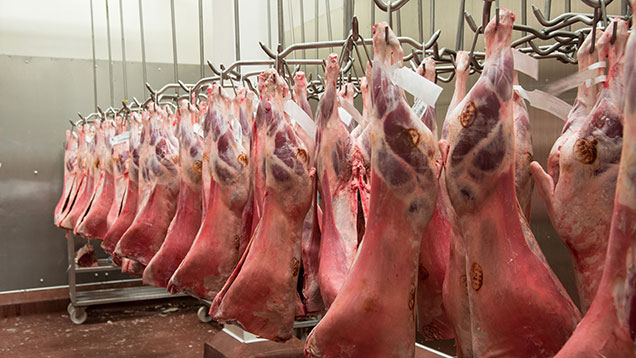Supplies set to put pressure on sheep prices this year
 ©FLPA/John Eveson/ Rex Shutterstock
©FLPA/John Eveson/ Rex Shutterstock Sheep prices are likely to fall this year as supplies look set to rise, says AHDB Beef and Lamb.
Many producers had hung on to older livestock, said AHDB analyst Mark Kozlowski, and these would start to be culled, adding to sheep meat on the market.
In addition lamb slaughterings were expected to rise, partly due to a big carry over from 2015.
High production would however be offset to a degree by fewer shipments from New Zealand, the UK’s main competitor domestically, said Mr Kozlowski.
See also: Alternative uses may raise coarse wool values for farmers
UK producers may also benefit from higher demand in France, the most important destination for UK sheep meat exports.
The French have a large appetite for lamb, but their sheep producers currently face movement restrictions from Bluetongue disease.
See also: Tesco lamb cost-of-production trial must work for all, says industry
Better prospects for UK sheep prices may also be on the horizon in 2017, as UK production is forecast to fall, said Mr Kozlowski.
However, lamb still remains a challenge to market to domestic consumers.
See also: Cattle prices set to continue downward slide in 2016
- The UK breeding flock is expected to shrink in 2016 and into 2017 as 2 million culls are slaughtered. This follows a low number of adult sheep (1.6 million) being slaughtered last year.
- The number of lambs born in 2015 fell, so earlier forecasts for the number that will be slaughtered have been revised down.
- However, lamb slaughterings are still expected to increase by about 1%, due to a bigger lamb crop this year and a large carry-over from 2015. Slaughterings are expected to fall about 2% next year.
- Carcass weights are likely to drop as they move closer to the average after two good years, but will remain above the five-year average.
- Overall, production will rise by 4% to more than 312,000t.
- Imports will rise in the first quarter, but fall afterwards, in part due to lower production in New Zealand, where the sheep industry is suffering from drought. Overall, imports will fall 5%.
- UK exports of sheepmeat will rise 5% due to a weaker sterling, lower production in France and issues with bluetongue infection on the continent.
- Total supply of UK sheepmeat will increase by 1%, although weather, currency movements and disease could change things.

